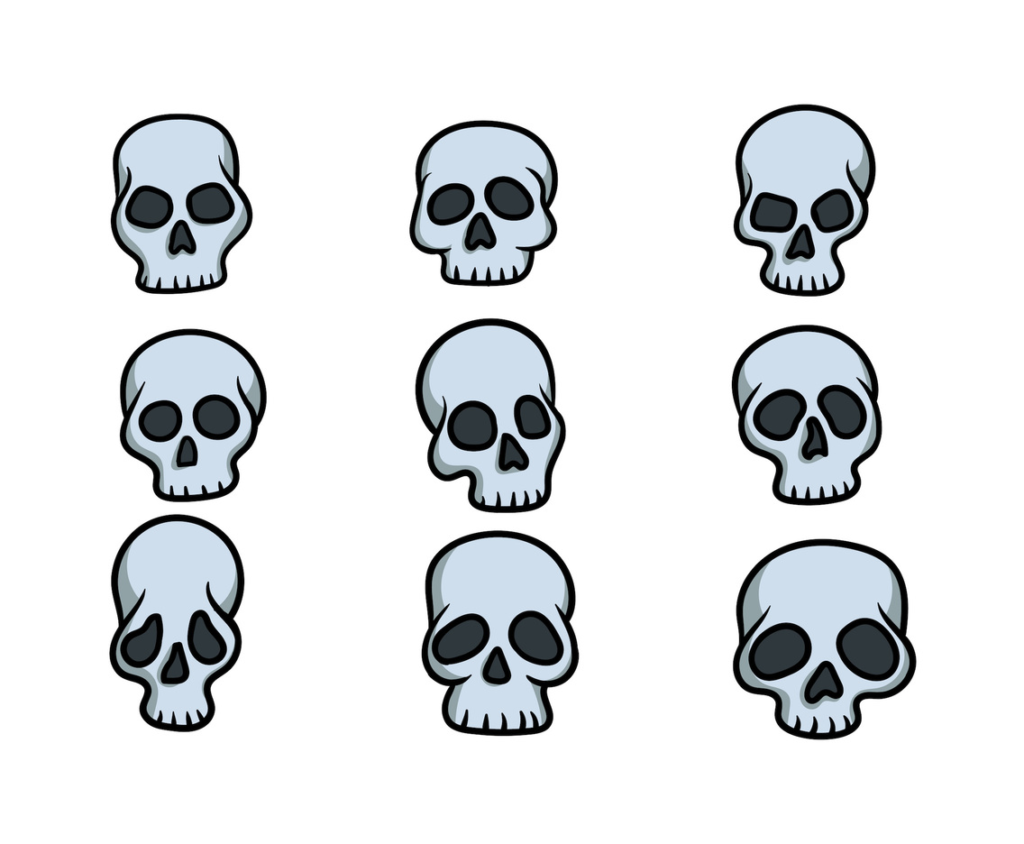Drawing a cartoon skull can be a fun way to explore anatomy with a creative twist. Whether you’re aiming for something spooky or whimsically cute, mastering the basics of skull drawing can add depth to your artistic repertoire. This guide will walk you through the process step by step, making it simple for artists of all levels.
Materials Needed
- Pencil;
- Eraser;
- Drawing paper;
- Fine liners or markers (optional for inking);
- Colored pencils or markers (optional for coloring).
Basic Structure of a Skull
Understanding the basic structure of a skull is crucial before you start cartooning. A human skull consists of the cranium (round part that houses the brain) and the mandible (the jawbone). Most cartoon skulls simplify these forms for stylistic purposes.
Step-by-Step Guide to Drawing a Cartoon Skull
Drawing the Outline
Start with a simple oval for the cranium and a boxy shape beneath it for the jaw. Keep the lines light until you’re satisfied with the proportions.
Adding Facial Features
Sketch in the eye sockets, nose cavity, and teeth. Cartoon skulls often feature exaggerated eye sockets and a simplified nose shape, resembling an upside-down heart or spade.
Customizing Your Skull
This is where you can get creative. Add unique touches like cracks, hats, or even crossbones beneath the skull for a classic pirate flag look.
Comparison of Cartoon Skull Styles
| Feature | Simplistic Style | Detailed Style |
|---|---|---|
| Eye Sockets | Large, circular | More anatomically inspired, with shading |
| Nose Cavity | Simple, upside-down heart | Detailed with more realistic shaping |
| Teeth | Minimalist or even lines | Individually drawn, with detail for realism |
| Additional Features | Few to none, keeping a clean look | May include cracks, shading, accessories for character |
This table outlines the differences in approach between simplistic and detailed cartoon skull styles, offering options based on your personal or project needs.
Advanced Techniques for Cartoon Skulls
To take your cartoon skulls to the next level, consider studying a bit of real skull anatomy to understand the shapes and shadows better. Experiment with shading and textures to give your skull more dimension and a sense of realism, even in a cartoon format. Playing with expressions can also add personality to your skull drawings, turning them into characters of their own.
Embracing Creativity: Personalizing Your Cartoon Skull
No two artists will draw a cartoon skull the same way, and that’s the beauty of creative expression. Beyond the basics of shapes and anatomy, personalizing your cartoon skull allows it to truly become a reflection of your artistic style and imagination. This section explores ways to infuse your drawings with individuality and flair.
Experiment with Themes
Whether you’re drawn to gothic aesthetics, pirate lore, or whimsical fantasy, incorporating thematic elements can transform a simple skull drawing into a storytelling piece. Consider the following ideas:
- Pirate Skulls: Add a bandana, an eye patch, or even a parrot perched atop the skull;
- Gothic Skulls: Incorporate Gothic motifs like roses, vines, or a moon backdrop to create a darkly romantic vibe;
- Fantasy Skulls: Think about adding magical elements, such as horns, elf ears, or mystical symbols glowing in the eye sockets.
Play with Expressions
Even though skulls lack muscles and skin, you can still give them a wide range of expressions. Adjusting the tilt of the skull, the shape of the eye sockets, and the arrangement of the teeth can convey emotions from sinister smiles to surprised gasps.
Accessories and Props
Props and accessories can add context and personality to your cartoon skull. Whether it’s a crown to signify royalty, headphones for a music lover, or a paintbrush and palette for the artistically inclined skull, these details can tell a story all on their own.
Use of Color
While skulls are traditionally depicted in white or bone colors, there’s no limit to the palette you can use for your cartoon versions. Bright colors, gradients, or even patterns (like polka dots or stripes) can make your skull pop and stand out. Consider using colors that complement the theme you’re going for, or simply choose your favorites to make a bold statement.
Incorporating Background Elements
While often overlooked, the background can play a significant role in your drawing. A detailed scene or a simple colored wash can set the mood and enhance the overall impact of your cartoon skull. From a spooky graveyard to a vibrant party scene, the background can completely change the narrative of your artwork.
Video Guide
To answer all your questions, we have prepared a video for you. Enjoy watching it!
Conclusion
Drawing a cartoon skull is a versatile skill that can be adapted to fit a wide range of artistic styles. Whether you’re creating a spooky scene for Halloween or a quirky character for a comic, the key is to start with the basics and then infuse your personality into the drawing. Remember, practice is paramount, so keep sketching, and soon you’ll find your unique twist on this classic motif.
